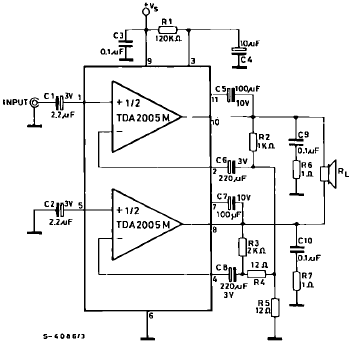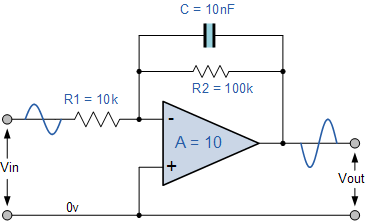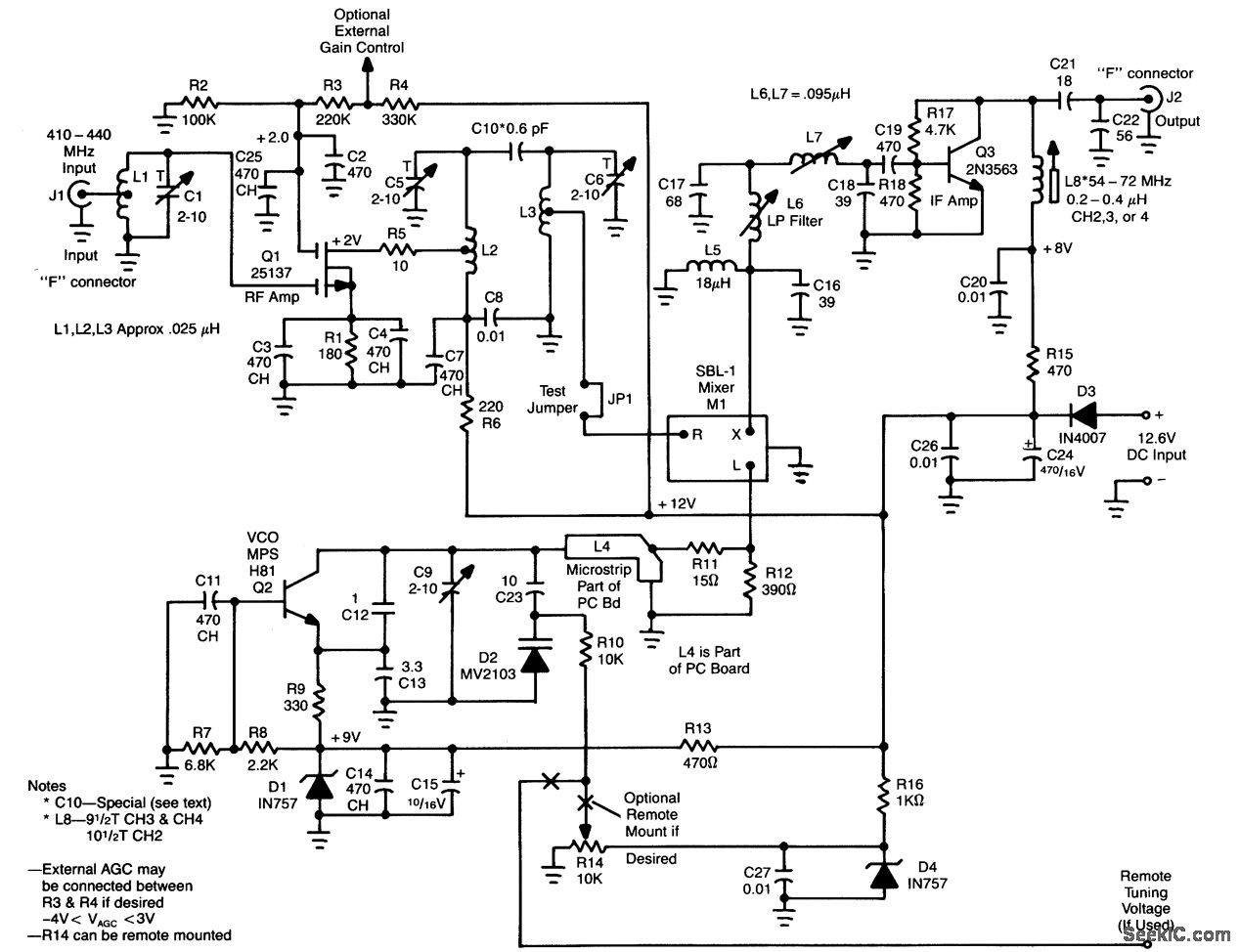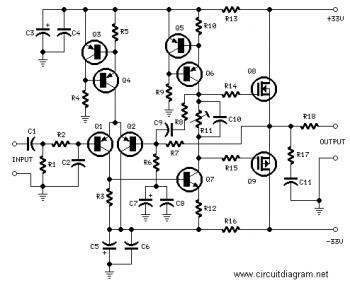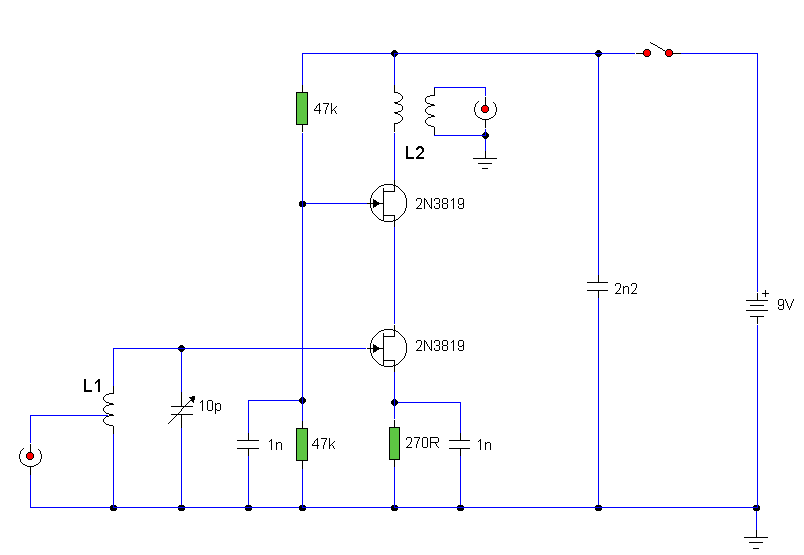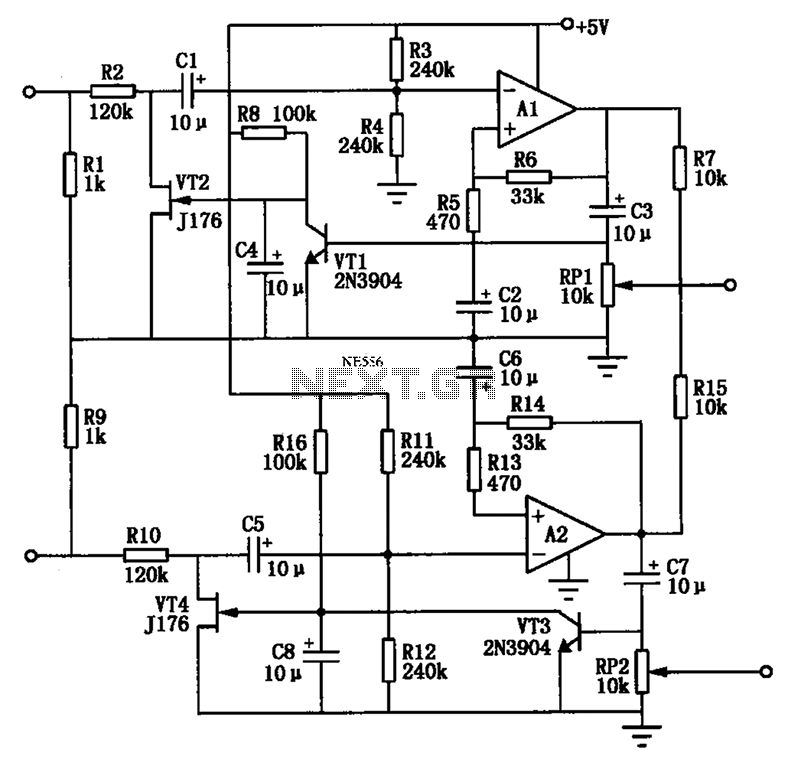
low cost audio headphone amplifier
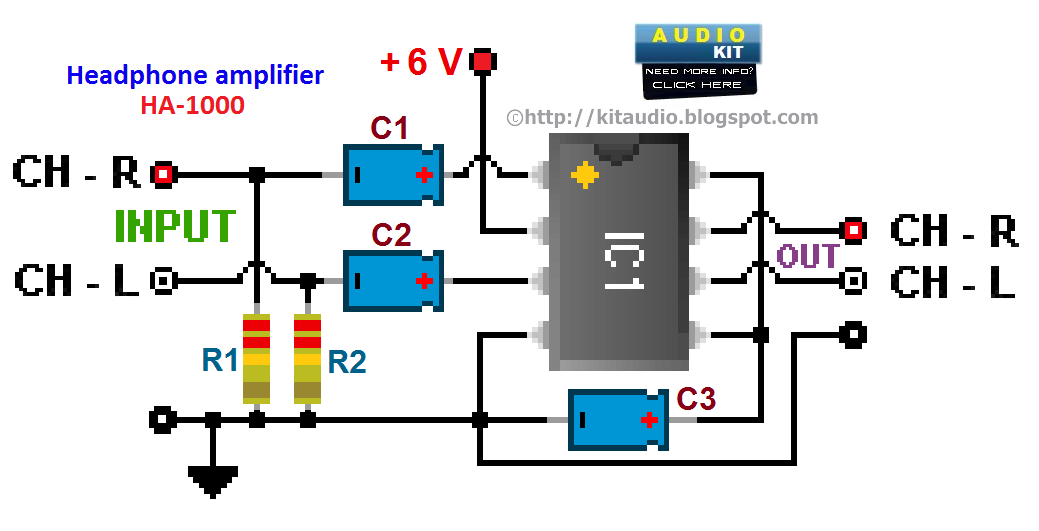
Assembly is straightforward; simply follow the PCB overlay. Ensure that the integrated circuit and the electrolytic capacitors are oriented correctly. The electrolytic capacitors are polarized, marked with a + or - sign, and must be installed properly into the PCB. The integrated circuit and its socket feature a notch at one end, as indicated on the PCB overlay. If the integrated circuit lacks a notch, a dot will be present next to pin 1, indicating the same end.
The assembly process of the circuit board requires careful attention to the orientation of components, particularly the integrated circuit (IC) and electrolytic capacitors. The PCB overlay serves as a visual guide, providing clear markings that indicate the correct placement of each component.
Electrolytic capacitors are polarized components, which means they have a positive (+) and negative (-) terminal. It is crucial to install these capacitors in the correct orientation to prevent damage or malfunction. The PCB will have corresponding markings to assist in this process. Failure to connect the capacitor correctly may lead to short circuits or reduced performance.
The integrated circuit also has specific orientation requirements. The IC and its corresponding socket will typically feature a notch at one end. This notch is a critical reference point that aligns with the PCB layout. If the IC does not have a visible notch, a dot will be present next to pin 1, serving as an alternative orientation marker. Incorrect installation of the IC can result in malfunction or permanent damage to the component.
In summary, following the PCB overlay and paying close attention to the orientation of polarized components such as electrolytic capacitors and integrated circuits is essential for successful assembly. Proper installation ensures the circuit operates as intended and maintains reliability throughout its lifecycle.Assembly is very straight forward, just follow the PC board overlay. Make sure you get the integrated circuit and the electrolytic capacitors the correct way around. The electrolytic capacitors are polarized, they have a + or - marked on them and they must be inserted correctly into the PCB. The IC and socket have a notch at one end, which is mark ed on the PC board overlay. If there is no notch on the IC, there will be a dot next to pin 1, which is the same end. 🔗 External reference
The assembly process of the circuit board requires careful attention to the orientation of components, particularly the integrated circuit (IC) and electrolytic capacitors. The PCB overlay serves as a visual guide, providing clear markings that indicate the correct placement of each component.
Electrolytic capacitors are polarized components, which means they have a positive (+) and negative (-) terminal. It is crucial to install these capacitors in the correct orientation to prevent damage or malfunction. The PCB will have corresponding markings to assist in this process. Failure to connect the capacitor correctly may lead to short circuits or reduced performance.
The integrated circuit also has specific orientation requirements. The IC and its corresponding socket will typically feature a notch at one end. This notch is a critical reference point that aligns with the PCB layout. If the IC does not have a visible notch, a dot will be present next to pin 1, serving as an alternative orientation marker. Incorrect installation of the IC can result in malfunction or permanent damage to the component.
In summary, following the PCB overlay and paying close attention to the orientation of polarized components such as electrolytic capacitors and integrated circuits is essential for successful assembly. Proper installation ensures the circuit operates as intended and maintains reliability throughout its lifecycle.Assembly is very straight forward, just follow the PC board overlay. Make sure you get the integrated circuit and the electrolytic capacitors the correct way around. The electrolytic capacitors are polarized, they have a + or - marked on them and they must be inserted correctly into the PCB. The IC and socket have a notch at one end, which is mark ed on the PC board overlay. If there is no notch on the IC, there will be a dot next to pin 1, which is the same end. 🔗 External reference
